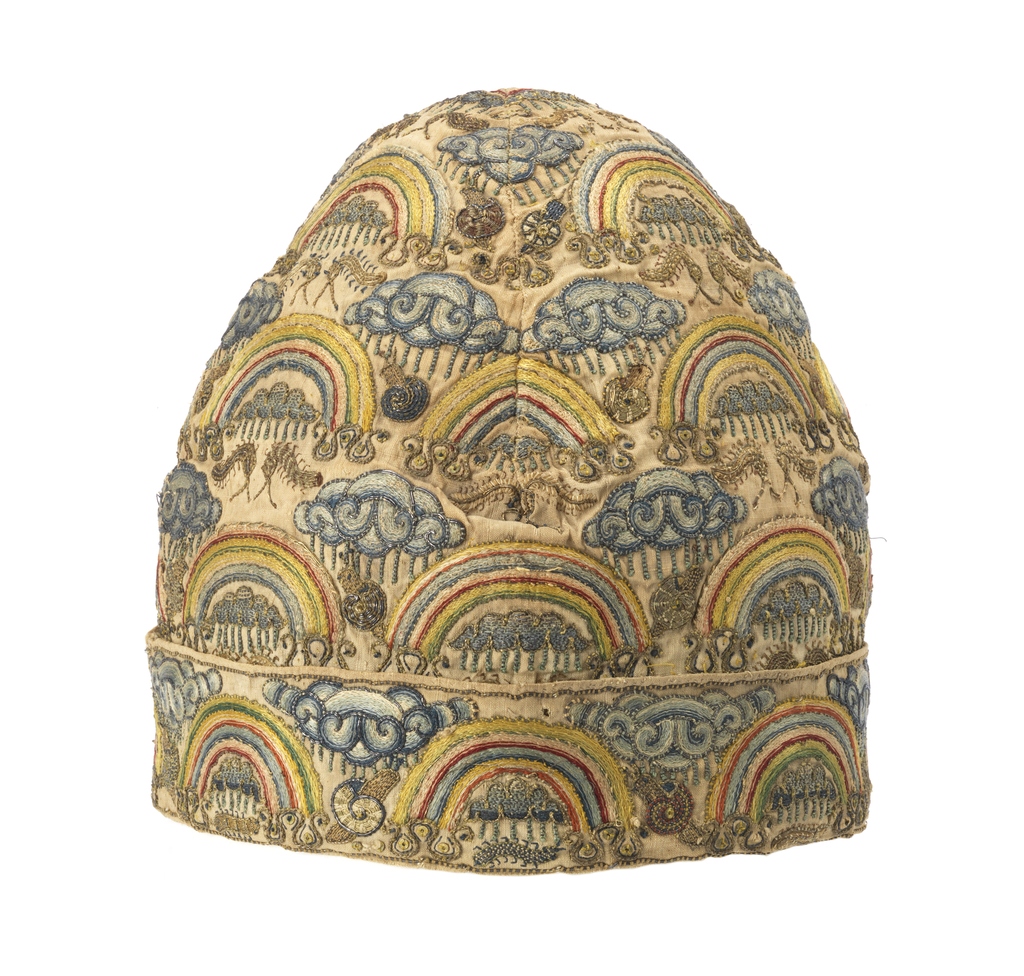This embroidered nightcap represents a type of hat worn by English men beginning around 1550. It was appropriate for any time of day despite its name, and men wore it informally at home but not while sleeping. A man would have rarely worn an embroidered nightcap in public, yet some appeared in elite portraiture. Headwear was important because keeping the head covered and warm was thought to be part of a healthy lifestyle, even though most men wore their natural hair at the time. This hat’s lavish decoration also indicated the wealth and social status of its wearer. It may have been embroidered by a woman in her home using designs from pattern books or a draftsman, since embroidery was an important skill for women of any status. It could have even been produced by the flourishing professional embroidery trade. Most embroidered hats at this time feature floral designs with insects or birds, so the pattern of rainbows and rainstorms above snails and caterpillars is distinctive. The rainbows may symbolize the peace brought by Queen Elizabeth I after a time of political storms, and the caterpillars signify this transformation.
Steve Burges earned a Bachelor of Arts degrees in Classical Archaeology and Art History with highest honors from the University of North Carolina at Chapel Hill in 2013. In 2013 he also entered an Art History PhD program at Boston University, where he studies ancient Roman art and archaeology. Steve participated in the Peter Krueger Summer Intern Program at Cooper-Hewitt in the summer of 2013.

One thought on “A Little Nightcap”
PB on July 20, 2020 at 11:52 am
Those are not caterpillars. Why must we always assume the most pleasant option and have a narrative; especially when it is abundantly clear they are house centipedes. We live with them now, and folks certainly lived with them then, and oftentimes things are ornamental without a reason, other than familiarity. Caterpillars, do not hve antennae, nor junctured legs. It is a lovely and interesting piece. Thank you for sharing it.